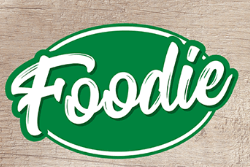Some lower-quality parchment papers are coated with Quilon — a chemical compound used to make them extra non-stick and heat-resistant.
Here’s the catch:
Quilon contains fluorinated substances similar to PFAS — known as "forever chemicals" due to their long-lasting presence in the environment and body.
While many reputable brands have moved away from Quilon, not all do , and not all disclose it clearly on packaging.
If you're using parchment paper regularly — especially at high temps — you could unknowingly be exposing yourself to trace amounts of these chemicals over time.
🔥 High Heat = More Risk?
Most parchment paper is labeled as oven-safe up to 420–450°F , which sounds great… until you realize:
- Some studies show that at high heat, certain parchment coatings may break down and release harmful compounds .
- If the paper starts to smoke, curl, or brown excessively — it’s being pushed beyond safe limits.
- Repeated exposure to heat-treated chemicals may contribute to hormonal disruption , liver damage , and other long-term health concerns linked to PFAS .
💡 Tip: Even if it says "food-safe," double-check the brand and coating type before using at high temps.
📊 How Safe Brands Stack Up
Not all parchment paper is created equal. Here’s a quick breakdown of what to watch for:
Always check for PFAS-free certification or FDA-approved labels for food safety.
🧪 What Are PFAS and Why Should You Care?
PFAS (Per- and polyfluoroalkyl substances) are a group of man-made chemicals used in products to repel oil, water, and grease.
They’re also linked to:
- Hormone disruption
- Immune system issues
- Liver and kidney damage
- Increased cancer risk
And guess what? They’ve been found in some takeout containers , microwave popcorn bags , and yes — potentially in some parchment and wax papers too.
So if you're trying to live a cleaner lifestyle, this is one more thing worth checking.
🥄 Safer Alternatives to Parchment Paper
If you're concerned about what might be leaching into your food, there are several safer options to consider:
Silicone mats are quickly becoming the gold standard for healthy bakers.
💡 Expert Tips for Using Parchment Safely
Want to keep using parchment paper without worry? Follow these tips:
- Stick to reputable, PFAS-free brands
- Avoid direct contact with heating elements
- Never let it touch the sides of the oven
- Don’t reuse parchment meant for single-use
- Keep oven temps under 420°F unless specified
- Store in a cool, dry place to avoid degradation
Also, don’t confuse wax paper with parchment — it’s not oven-safe!
🧴 Other Kitchen Items That Might Be Hiding PFAS
Parchment paper isn’t the only possible source of PFAS in your kitchen:
The key is awareness — and choosing PFAS-free wherever possible.
📈 Monetization Hacks for Bloggers & Content Creators
If you run a blog, YouTube channel, or social media account focused on wellness, clean eating, or kitchen safety, this kind of content is perfect for AdSense optimization and affiliate marketing opportunities.
Here’s how to monetize it:
- Place display ads between key sections.
- Recommend safer parchment alternatives like silicone baking mats , eco-friendly wraps , or non-stick pans using affiliate links.
- Offer downloadable “Kitchen Safety Checklist” behind email opt-ins.
- Create short videos explaining the topic for YouTube, TikTok, or Instagram Reels with affiliate links in the description.
📊 SEO Tips for Maximum Reach
To help your post rank higher in search engines, optimize for these keywords:
- "Is parchment paper safe"
- "Parchment paper dangers"
- "Parchment paper vs. silicone mat"
- "PFAS in parchment paper"
- "Safe alternatives to parchment paper"
- "Cooking with parchment paper risks"
Use them naturally throughout your content, especially in:
- Headings
- Image alt text
- Meta descriptions
- Video titles and tags
❓ Frequently Asked Questions
Q: Is parchment paper toxic when burned?
A: If it browns or curls slightly, it’s fine. But if it catches fire or smokes , discard and ventilate.
Q: Can I use wax paper instead?
A: No — wax paper melts and can ignite in the oven. Always use parchment for baking.
Q: Does parchment paper affect flavor?
A: No — but poor-quality paper can leave a slight chemical aftertaste.
Q: Are silicone baking mats safe?
A: Yes — they’re non-reactive, durable, and reusable.
Q: Can parchment paper be reused?
A: Yes — for low-temp baking or roasting. Discard if it turns dark or brittle.
🧾 Final Thoughts
Parchment paper is convenient — no doubt about it.
But convenience should never come at the cost of your long-term health.
As with anything you eat off of, wrap in, or bake with — it’s worth knowing what’s in your parchment paper and whether it’s truly safe under high heat.
So next time you reach for that roll, read the label carefully.
Your body — and your kitchen — will thank you.

